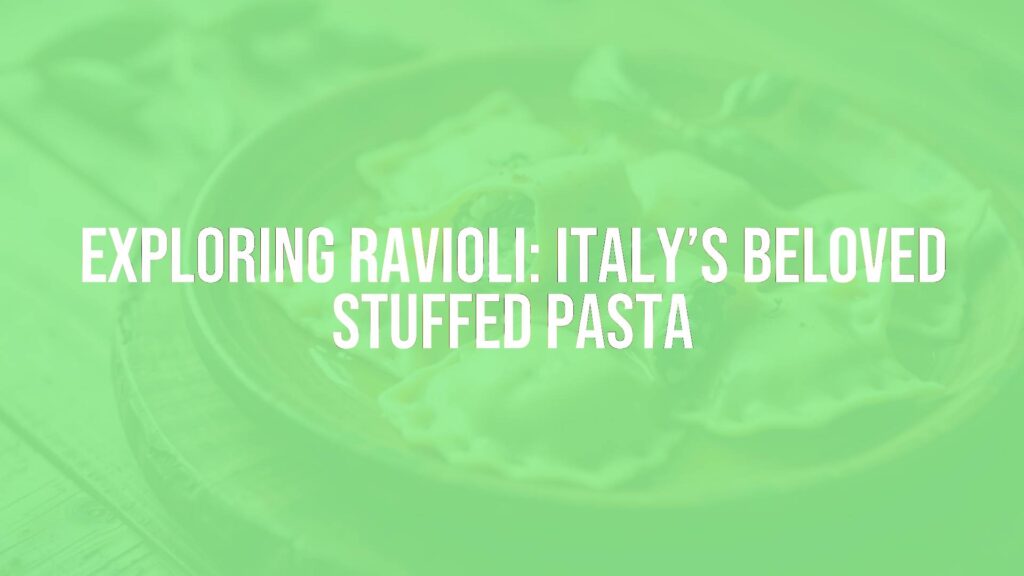Introducing Ravioli: An Icon of Italian Cuisine
Ravioli, one of the most recognized stuffed pastas in Italian gastronomy, is cherished for its versatile fillings and delicate yet satisfying texture. These pasta parcels, typically square or round, are filled with a variety of ingredients, making each bite a harmony of flavors and textures. Despite their simple appearance, ravioli hold a special place at both festive Italian tables and in everyday meals around the world.
Defining Characteristics
What sets ravioli apart is their structure: two layers of pasta dough enveloping a flavorful filling. The dough is traditionally made using wheat flour and eggs, yielding a supple yet resilient casing that holds its shape during boiling. The filling can range from mild ricotta cheese and spinach to robust combinations like meat, mushrooms, or seafood, reflecting local ingredients and tastes. Once boiled, ravioli are typically served with a complementary sauce such as sage-infused butter, tomato-based sugo, or a light cream sauce.
Historical Perspective and Regional Significance
The origins of ravioli date back several centuries, with the earliest documented mentions in 14th-century Venice and Tuscany. Each region of Italy has developed its own variations: Liguria is known for ravioli di magro (with herb and cheese filling), Piedmont favors meat-based fillings, and Sardinia offers a distinctive sweet version called ravioli dolci. Historically, ravioli were prepared for special occasions and religious festivals, with fillings often reflecting available seasonal produce.
Key Ingredients in Traditional Ravioli
Classic ravioli rely on a few essential components:
- Pasta dough: Fine wheat flour and fresh eggs form a smooth, elastic dough.
- Filling: Italian ricotta or fresh sheep’s milk cheese, leafy greens such as spinach or chard, minced meats (typically veal, pork, or beef), or even pumpkin or squash in some regional renditions.
- Seasonings: Nutmeg, black pepper, Parmigiano Reggiano, and finely grated lemon zest provide depth and brightness.
Flavor, Texture, and Visual Appeal
Ravioli offer a pleasing interplay between tender, slightly chewy pasta and a richly flavored, often creamy or savory filling. Their shapes can vary—although usually square, they may also be half-moon-shaped (mezzelune) or circular depending on tradition and local custom. Served with a light coating of sauce and sometimes a sprinkle of grated cheese or fresh herbs, ravioli present an inviting and appetizing look at the table.
Common Variations and Ingredient Substitutions
The adaptability of ravioli is one reason for their global popularity. Traditional Italian variations include:
- Ravioli di carne: Filled with seasoned ground or braised meats.
- Ravioli di ricotta e spinaci: A classic vegetarian option with herbed cheese.
- Ravioli di pesce: Featuring seafood such as lobster or shrimp in coastal areas.
- Ravioli dolci: Sweet versions with ricotta, sugar, and citrus zest, served with a dusting of powdered sugar.
Modern kitchens often experiment with fillings like mushrooms, roasted vegetables, or alternative cheeses. For dietary needs, gluten-free pasta dough or vegan substitutes can be used without sacrificing the spirit of the dish.
Serving Suggestions and Pairings
Ravioli are highly versatile in their accompaniments. Simple preparations, such as melted butter with sage or olive oil and herbs, allow the filling’s flavor to shine. For heartier fare, rich tomato or meat ragu sauces are common. Ravioli can be served as a primo piatto (first course) in a traditional multi-course Italian meal, or as a main dish with a generous portion and robust sauce.
Wine pairings depend on the filling: white wines like Vermentino or Soave complement herbed cheeses and vegetables, while red wines such as Dolcetto d’Alba or Chianti match well with meat-filled ravioli. Light green salads or roasted vegetables are often served alongside for balance.
Enduring Legacy
Ravioli’s enduring popularity is testament to its adaptability and the creativity of Italian culinary traditions. Whether filled with local specialties or innovative contemporary flavors, ravioli remain a beloved part of Italy’s gastronomic heritage and a cherished comfort food across the globe.

